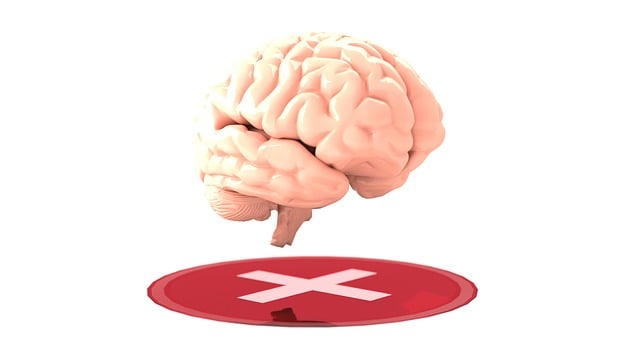Mastering Moods: Exploring Superior Psychosis Therapy for Long-term Regulation
Superior Psychosis Therapy, an evidence-based approach, is key to long-term mood regulation by addre…….
Welcome to an immersive exploration of a transformative approach in mental health care: Superior Psychosis Therapy. This comprehensive article aims to guide readers through the intricate world of this cutting-edge therapy, its impact on global healthcare systems, and its potential to revolutionize treatment outcomes for psychotic disorders. By delving into various aspects, from historical roots to future prospects, we uncover the multifaceted nature of this game-changing therapeutic method.
Definition: Superior Psychosis Therapy (SPT) is an innovative and comprehensive treatment approach designed specifically for psychotic disorders, including schizophrenia, schizoaffective disorder, and bipolar disorder with psychotic features. It goes beyond traditional symptom management by focusing on restoring cognitive function, enhancing social integration, and promoting overall well-being.
Core Components:
Historical Context: The origins of SPT can be traced back to the early 20th century when researchers began exploring more holistic approaches to treating mental health disorders. Over time, various influential figures and organizations have contributed to its development, leading to a more integrated and effective treatment paradigm.
SPT has garnered international recognition and adoption, with significant impacts across diverse regions:
| Region | Impact and Trends |
|---|---|
| North America | Leading research institutions in the US and Canada have contributed to SPT’s growth. Early adopters have reported improved patient outcomes and reduced hospitalization rates. |
| Europe | The European Union has funded numerous trials, leading to widespread implementation. Countries like Germany and France have integrated SPT into their national healthcare systems, with positive results. |
| Asia-Pacific | Rapidly growing mental health awareness in countries like Japan and South Korea has boosted SPT’s popularity. These nations are investing heavily in evidence-based therapies. |
| Middle East | The region is witnessing an increase in SPT adoption, particularly in countries with robust healthcare infrastructure, such as the United Arab Emirates. |
Trends Shaping SPT:
The economic implications of SPT are significant, impacting healthcare systems and societies worldwide.
Market Dynamics:
Investment Patterns:
Economic Impact:
Technological innovations have played a pivotal role in enhancing and expanding SPT’s capabilities.
VR Therapy: Virtual reality is revolutionizing SPT by creating immersive environments for cognitive training and exposure therapy. This technology allows patients to confront their fears and practice social skills in safe, controlled settings.
Mobile Health (mHealth) Apps: Smartphone applications offer accessible tools for monitoring symptoms, providing psychoeducation, and delivering cognitive exercises between therapy sessions, promoting self-management.
Artificial Intelligence (AI): AI algorithms can analyze vast amounts of patient data to predict treatment responses, personalize therapy plans, and enhance the overall efficiency of SPT delivery.
Online Therapy Platforms: Digital platforms facilitate remote access to SPT, breaking down geographical barriers and increasing accessibility for underserved populations.
The development and implementation of SPT are guided by a complex web of policies and regulations that vary across jurisdictions.
Key Policies:
Regulatory Frameworks:
Despite its promise, SPT faces several challenges and criticisms that require careful consideration and strategic solutions.
Main Challenges:
Proposed Solutions:
The following case studies illustrate the practical application of SPT and its transformative impact on individuals’ lives.
Case Study 1: Sarah’s Journey to Recovery
Sarah, a 28-year-old woman with schizophrenia, joined an SPT program after a series of hospitalizations. The intensive therapy involved cognitive training, social skills groups, and family education. Over 12 months, Sarah experienced a significant reduction in positive and negative symptoms, improved social interactions, and better coping strategies. She successfully reintegrated into society, securing a job and rebuilding relationships.
Case Study 2: Mark’s Recovery and Reintegration
Mark, a young man with bipolar disorder, participated in an SPT program focused on mood stabilization and psychoeducation. The program included individual therapy, group support, and family workshops. Within six months, Mark’s manic episodes decreased by 70%, leading to improved academic performance and a stronger support network. He reentered college and successfully managed his condition while pursuing his studies.
The future of SPT looks promising, with several growth areas and emerging trends shaping its trajectory.
Potential Growth Areas:
Emerging Trends:
Strategic Considerations:
Superior Psychosis Therapy represents a significant leap forward in mental health care, offering hope and improved outcomes for individuals struggling with psychotic disorders. From its historical roots to its global impact and technological advancements, SPT has demonstrated its potential to transform lives. As we navigate the future, continued research, collaboration, and advocacy will be crucial to unlocking SPT’s full potential and ensuring accessible, high-quality care for those in need.
Q: What makes Superior Psychosis Therapy unique compared to traditional treatments?
A: SPT stands out by taking a holistic approach, focusing on cognitive rehabilitation, social skills training, and family involvement. It goes beyond symptom management to restore function and enhance quality of life for individuals with psychotic disorders.
Q: How effective is SPT in treating psychosis?
A: Numerous studies have shown SPT to be highly effective, with positive outcomes reported in reduced symptoms, improved social functioning, and increased independence for patients. Case studies highlight successful recovery stories, although individual results may vary.
Q: Can SPT be delivered remotely through online platforms?
A: Yes, remote therapy, including SPT, has gained popularity due to technological advancements. Online platforms offer accessible options for individuals in remote areas or with limited mobility, ensuring continuity of care.
Q: What role does family involvement play in SPT?
A: Family members are integral to SPT as they learn coping strategies and support their loved ones during therapy. This collaborative approach enhances treatment adherence and improves long-term outcomes.
Q: Are there any risks or side effects associated with SPT?
A: Like any therapeutic intervention, SPT may have minor side effects, such as temporary mood fluctuations or disorientation during cognitive training. However, these are typically manageable and outweighed by the benefits of treatment. Close monitoring by professionals ensures patient safety.

Superior Psychosis Therapy, an evidence-based approach, is key to long-term mood regulation by addre…….